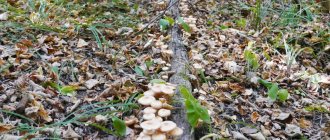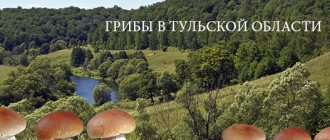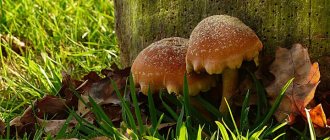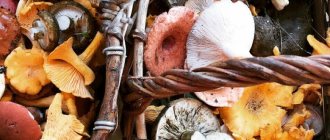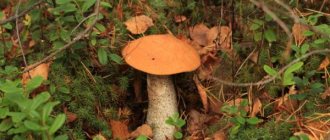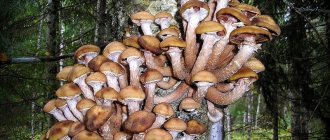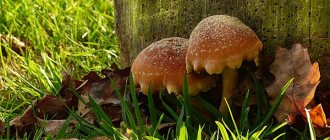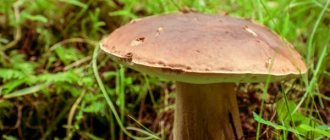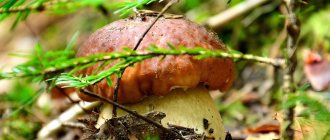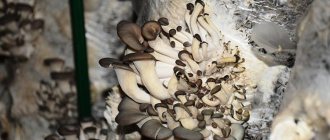Many lovers of quiet hunting often wonder where honey mushrooms grow in the Oryol region in 2022. Interest arises not only among beginners who decide to devote their free time to picking mushrooms, but also among visiting guests, amateurs and even experienced mushroom growers who decide to expand their horizons to new places on the map. With helpful tips and a list of the most popular forest features, every local resident can stock up on plenty of edibles for their home pantry. This is especially true for honey mushrooms that sprout in families on logs, dry and old trees, in deciduous and mixed forests. After all, as many people know, almost all varieties of small mushrooms can be collected in one sitting, thanks to their ability to grow in bunches.
Unlike most edible mushrooms, which have false counterparts, honey mushrooms cannot be confused with poisonous mushrooms, knowing the basic characteristics of the breed. Color, size, structure of the cap and stem, the presence of a film skirt are only part of the factors necessary to accurately determine the following varieties of honey mushrooms: autumn, winter, summer, meadow, spring, royal. Such information is best absorbed visually. Therefore, if possible, you should go on your first hunt only with an experienced mushroom picker who collects honey mushrooms all year round. Well, if you don’t know any mushroom growers, you can replace the visible comparison with a training video and photo showing a clear example.
Mushrooms in Orel and the Oryol region, which ones can or cannot be collected?
Useful recommendation!
To return from the forest with a full basket of harvest, you should not conduct quiet hunting in small forest belts. The right decision would be a trip to the mushroom pantry, located near the village of Naryshkino. And although the place is located far from the city, you can get to a given point in three ways: public transport, personal cars or taxi. If you prefer a car, it is enough to build a route using a GPS navigator, not forgetting to set a point upon arrival in the forest where the car is parked, so that at the end of the hunt you can calmly leave the thicket without forgetting the parking place. Depending on the chosen season, you can find many edible mushrooms in the Naryshkinsky forest, known for their bright taste and aroma. The generalization covers: boletus and Polish mushrooms, obabka, champignons and honey mushrooms, puffballs and chanterelles.
You should not look for edible prey in contaminated areas. Mushroom places located near cemeteries, garbage dumps, factories and highways remain prohibited for many years, due to the impregnation of the pulp with toxins, poisons and carcinogens that are hazardous to health. Even after heat treatment, the risk of poisoning and intoxication of internal organs remains.
Regardless of whether mushroom hunting falls in spring, summer or autumn, it is recommended to start collecting mushrooms in the Oryol region from forest areas passing along the road to the Moscow region. Old trees that have created optimal conditions for the germination of protein products retain moisture longer, shading the soil with their crown. It is not surprising that favorable places remain the most favorite among experienced mushroom growers. At the local forum, the advantage of vast territories was repeatedly noted, which makes it possible to collect fruits not only for harvesting for the winter, but also for preparing first and second courses, warm salads, pates for breakfast and snacks for strong drinks.
Important!
Pregnant women and women during lactation, people with individual intolerance, as well as during periods of exacerbation of diseases of the gastrointestinal tract, kidneys and liver should not consume mushrooms.
Taking into account the statistics of past years, we can note an increased fruiting of mushrooms in the cities within the Oryol region: Mtsensk, Novosil, Bolkhov and Stanovoe. In the last two years, slightly less fruit was collected in the north-eastern direction in Otradinskoye.
Suitable forest species
Truffle is a very capricious mushroom. He prefers to be friends only with certain types of trees, so his search for others will lead to nothing. The capricious grows near the roots, where it feels more comfortable, since there is always a large supply of moisture, which means it can develop fully. Selects the following trees as neighbors:
- beech;
- hornbeam;
- birch;
- hazel;
- oak.
Classification and growth zone of mushrooms
The last option is the most common. It is under it that the mushroom feels at ease. Acorns are the favorite food of wild boars, which tend to the tree to eat them. However, the truffle has a very strong aroma, which pigs smell very well and dig up the soil to feast on it. This promotes the growth of the fungus.
For mushrooms in Shablynsky and Dmitrovsky districts
Despite the fact that in recent years mixed forests with deciduous and coniferous trees growing in their area have become very popular, allowing them to collect more prey, two areas located within the Oryol region do not lose their relevance. The Dmitrovsky and Shablynsky districts with a deciduous zone have repeatedly delighted us with noble mushrooms during the harvest season and consoled us with conditionally edible species in the off-season. If you know the distinctive characteristics that separate an edible mushroom from a false or poisonous one, even a novice mushroom picker will not leave the forest with an empty basket in 2022. The most important thing is not to forget about weather conditions. It is recommended to focus on the beginning of fruiting by heavy rainfall. For example, from the beginning of the rains it is worth waiting 5-7 days so that the mycelium has time to wake up and the mushrooms have time to grow, becoming suitable for collection.
The very first mushrooms are rightfully considered to be morels and strings, which sprout in mid-spring. Their fruiting occurs on April 15-20 and continues until the drought period, when the air temperature rises to a critical level of 22-25 degrees Celsius during the daytime. Following them, the baton is taken up by: May row, meadow and summer honey mushrooms, row, boletus and boletus.
Important!
Particular care should be taken when collecting stitches. Not all subspecies belong to the category of conditionally edible, and those that are suitable for cooking contain toxins and carcinogens that decompose only when exposed to high temperatures (drying in an electric dryer for a certain time).
From mid-July to early August, mushroom pickers can begin hunting for delicious chanterelles, umbrellas, semi-white and porcini mushrooms. The exact date of fruiting cannot be predicted; it all depends on the weather and the presence of precipitation.
Helpful advice!
You should not purchase ready-made canned or collected boletus mushrooms, honey mushrooms, milk mushrooms and other mushrooms from local residents. Due to ignorance or errors during collection, a person can endanger the health of his family and friends. If you have no experience, but want to try the gifts of the forest, it is better to go to the supermarket.
general characteristics
Most mushroom species in this region grow on a variety of soil substrates. They participate in the formation of humus and the decomposition of organic matter (mineralization) in the soil. Depending on the species, the processes of forming symbiotic relationships occur next to various representatives of tree species, for example, larches or conifers. The zone of mycorrhiza formation is individual.
A general qualitative characteristic is the presence of vitamins, microelements and other useful substances in the structure of these forest organisms, which well complement the human food basket.
All forest mushrooms are divided according to the degree of edibility and taste categories. Depending on the presence of toxic substances, the degree of edibility is divided into 4 categories (types):
- Category 1: edible;
- Category 2: conditionally edible;
- Category 3: inedible;
- Category 4: poisonous.
Based on their taste, mushrooms are also divided into 4 categories:
The most delicious mushrooms belong to categories 1 and 2.
Category 1 includes mushrooms with excellent taste. It includes russula, champignons, white mushrooms and milk mushrooms. Mushrooms representing this flavor category can be eaten without heat treatment.
The next group - category 3, consists of less tasty aromatic mushrooms (moss mushrooms, morels, honey mushrooms, etc.) culinary specialists prefer to prepare pates and salads from them. They are considered to have average taste.
Oryol Polesie - no collection!
There are few corners of untouched forest left, which belong to the protected area. But Oryol Polesie is among the territories where mushroom picking is strictly prohibited and punishable by fines. In order to avoid getting caught, save your budget and preserve the fauna of nature for the future generation, you should abandon the idea of quiet hunting in a nature reserve. It would be more correct to prefer to collect mushrooms in equally wide forest areas, famous for the good fruiting of mushrooms in the Oryol region. The Naryshkin forest alone is worth it! The rich fauna, combined with increased productivity, will provide the mushroom picker in the summer not only with products high in protein, but also with berries, medicinal herbs and wild flowers.
If you want to collect porcini mushrooms, you should prefer a mixed forest, where you can find not only boletus and mushrooms, but also chanterelles, milk mushrooms, and other noble species that have an attractive aroma and rich mushroom taste.
You can pick mushrooms in the Oryol region in 2022 in any forest with fertile soil and clean air, subject to suitable weather and the ability to distinguish edible and conditional subspecies from inedible and poisonous ones. If desired, the reviews left by local residents on the city forum and the map of mushroom places in the photo will serve as a hint.
Neighborhoods of the city of Orel
Mushroom pickers especially highlight the village of Naryshkino, where the Naryshkinsky forest is located, located 20 km from Orel. It belongs to the regions of the region rich in honey mushrooms. These mushrooms appear on stumps in early summer and grow in large families. There is also a more remote Khotynetsky district, famous for its harvest. It is located northwest of Naryshkino. There is an opportunity, while traveling in the direction of Moscow, to stop in one of the forests along the route where mushrooms grow. In the vicinity of Orel there are many places where it is better to go on the weekend, spending no more than half an hour’s drive.
Northeast directions:
- city of Mtsensk: village of Stanovoe, village of Dumchino;
- the city of Novosil;
- city of Bolkhov;
- village of Otradinskoye.
In the Oryol region you can pick both mushrooms and berries. As soon as there is at least a little rain, mushroom pickers go on a quiet hunt. Different types of edible mushrooms grow in different areas of the Oryol region. These include porcini mushrooms, oyster mushrooms, boletus mushrooms, as well as butter mushrooms, milk mushrooms, morels and honey mushrooms (meadow, winter, summer and others). Mushroom picking begins in early spring, but the most active picking time is early autumn. It must be borne in mind that in the Oryol region there are also poisonous mushrooms.
Oryol Region.
Here you can find the common fly agaric, toadstool, which often leads to death, false honey fungus, and stitches. Strings in some places are considered conditionally edible mushrooms; in appearance they resemble a morel mushroom. Of course, in order to collect a good harvest of mushrooms, you need to know where to go for it. The Oryol Polesye National Park is famous in this sense in the Oryol region.
Interesting read: Where to collect oyster mushrooms and how to grow them at home.
Harvest in the photo:
Health benefits and harms
Chanterelles are popular not only because of their excellent taste, but also because of their beneficial properties. Mushrooms contain a large amount of microelements and vitamins. It contains copper, selenium, zinc and vitamins PP. Mushrooms are indispensable for proper nutrition, their calorie content is very low, despite the fact that the body is very quickly saturated with them.
- Scientists have identified trace elements that make chanterelles an indispensable product:
- Ergosterol - cleanses the liver of parasites and normalizes its proper functioning.
- Hinomannose - destroys helminths and other parasites in the human body.
- Trametonolinic acid and K-10 polysaccharide, which can fight the hepatitis virus.
- Cautions:
- Chanterelles are contraindicated for anyone who has an allergic reaction to mushrooms.
- They should not be given to children under three years of age, since their stomachs are not yet mature enough to eat heavy foods.
- Any mushrooms collected near roads or enterprises should not be introduced into the diet.
Did you know? The yellow color of chanterelles is given by carotene, which is very important for human vision.
Chanterelles are unusual, bright and very healthy mushrooms. They have excellent taste and are valued all over the world, and even a beginner can find them at the edge of the forest and grow them at home. Knowing how to correctly collect and distinguish them from their poisonous counterparts, they will become indispensable in the diet and will only bring benefits.
